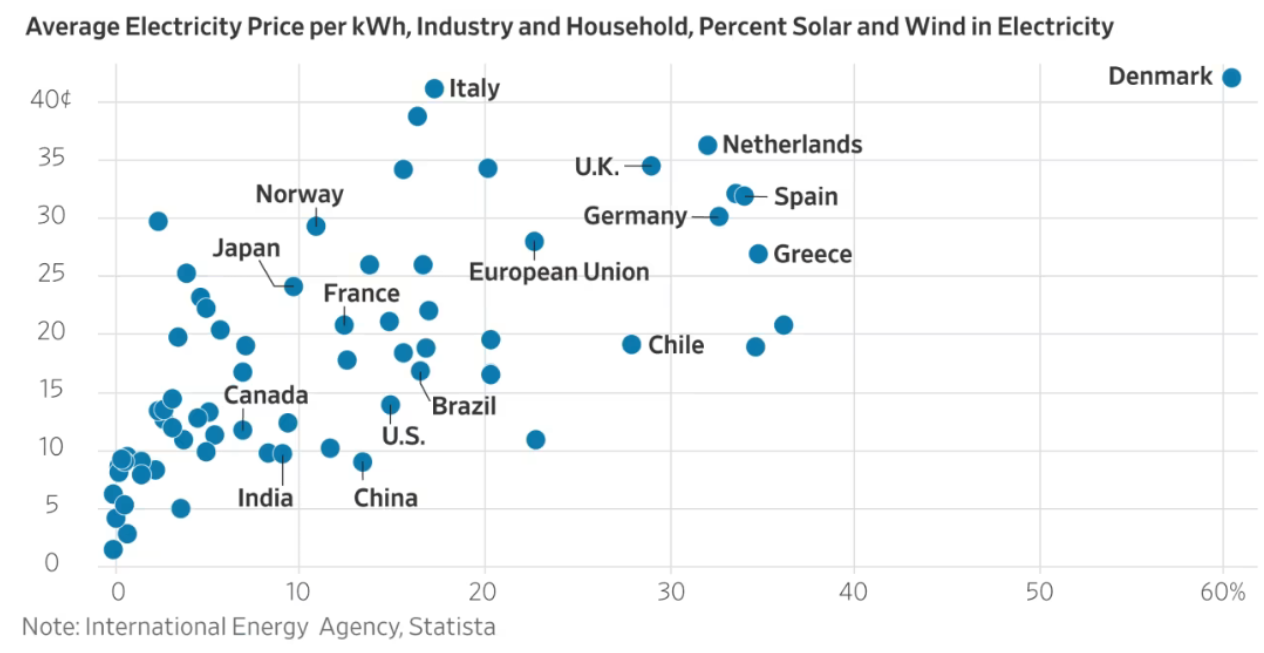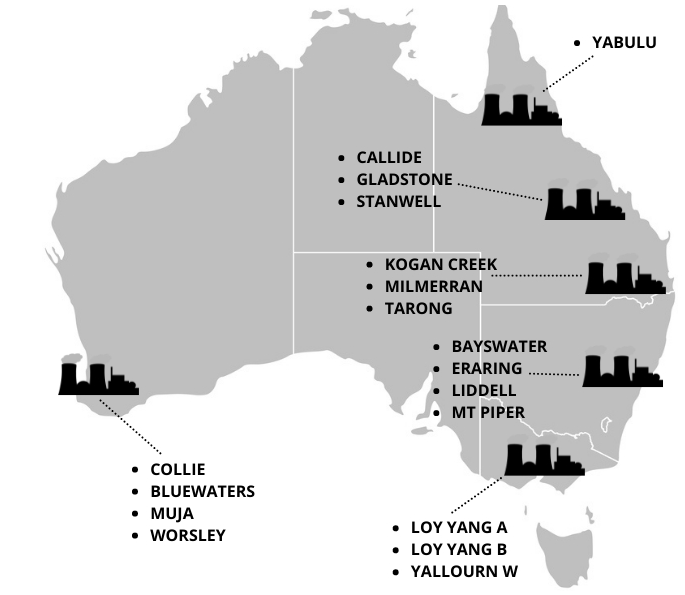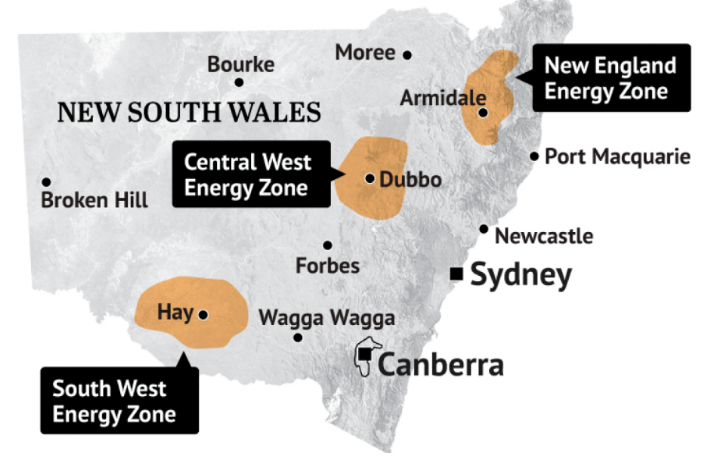The narrative that renewables are cheaper than baseload power is a myth. Building an intermittent renewable electricity system will be incredibly expensive and inevitably increase power bills.
The global empirical evidence is clear: the higher the share of renewables in an energy system, the higher the electricity cost:

The reasons should be obvious. Renewables have low load factors. You need backup generation and lots of storage because they are intermittent and have low energy density. You need a lot more network infrastructure to connect them.
As UK energy expert Kathryn Porter noted in a recent podcast, “An 800 megawatt CCGT (combined-cycle gas turbine) needs one grid connection. The equivalent megawatts of wind power need 65 or more wind turbines. And that’s just to give you the nameplate. If the wind turbines are only operating a third of the time, you essentially need three times as many to produce the same amount of energy. So this leverages up very quickly”.
Recent modelling by Moody’s estimated that the retail cost of electricity will increase by 20%–35 % in real terms over the next decade, based on conservatively low renewable investment numbers.
Modelling released this year as part of Infrastructure Victoria’s 30-year infrastructure strategy projects that wholesale electricity prices will peak at around $120 per megawatt-hour in 2030 if the state achieves its renewable energy targets. This amount is more than double the current price.
Peter Warnes published an excellent article highlighting the costs of the renewable energy transition for Australia.
Warnes notes that Australia’s traditional coal-fired generators are located close to our capital cities with simple transmission lines:

However, “the gradual closure of coal-fired power stations and the growth of renewables, mostly solar and wind has altered the generation map as renewable zones are established in regional areas well away from the coast and most consumers”:

“The Climate Change and Energy Minister, Chris Bowen, has a target to add 10,000 kilometres to the national transmission network by 2030. Put in context, it is 2.5 times the east/west distance of the Australian mainland or 11 hours flying in an A380 which has a cruising speed of 910 km/h. It is highly unlikely the target will be achieved, and the cost will be in the tens of billion”.
Warnes provides a case study of NSW to highlight the enormous cost of the renewable energy transition.
“A prime example is the 365km HumeLink in southwest New South Wales, which is well behind schedule and the cost estimate has blown out to almost $5 billion to ultimately connect with Snowy Hydro 2.0, where the cost has soared more than sixfold from an original estimate of $2 billion to well over $12 billion”.
“The issues in the South West Renewable Energy Zone (SWREZ) of New South Wales are symptomatic of the problems facing energy transmission”.
Warnes concludes that “electricity costs are likely to remain elevated. Government subsidies are a band aid on a meaningfully larger problem”.
Too right. The half a billion dollars or more of investment required for renewable generation, transmission, and storage must be paid one way or another: either through higher retail power bills or via taxpayer subsidies.
There is no free lunch.

